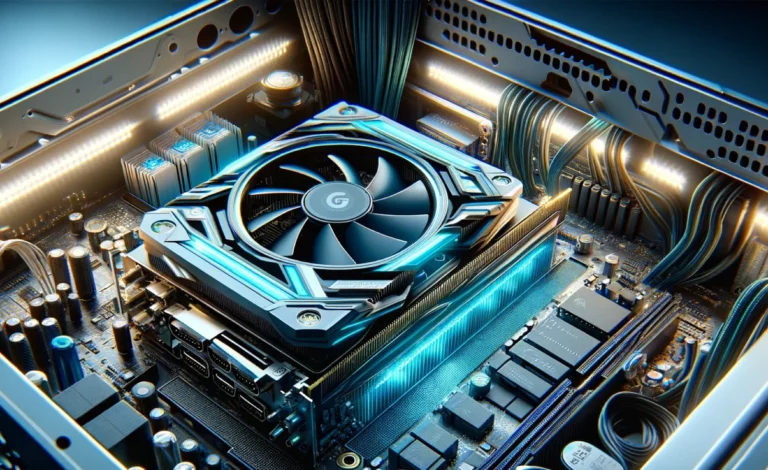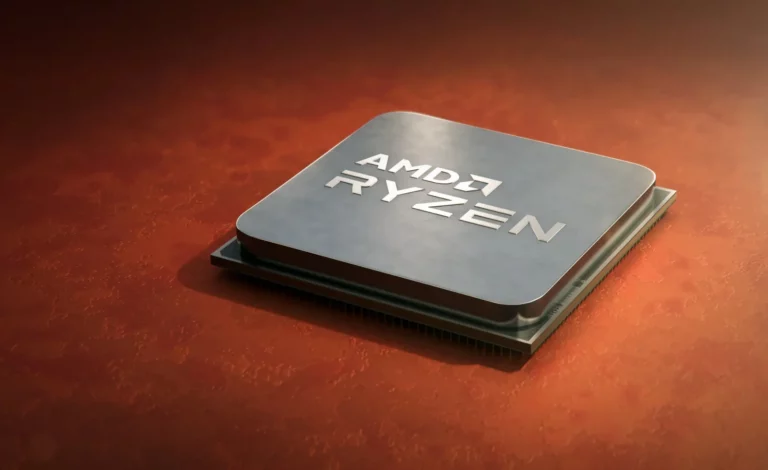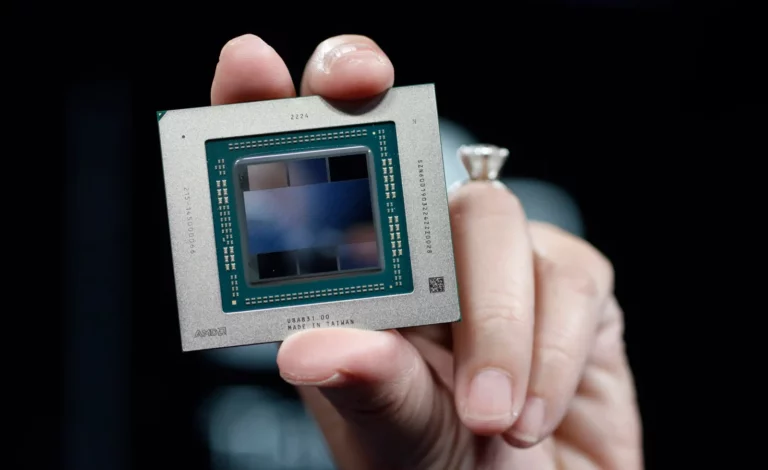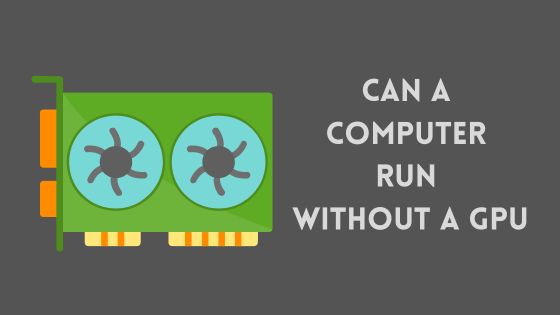Nvidia Ti vs Non Ti: A Comprehensive Comparison
NVIDIA’s GeForce GTX Ti and GeForce GTX non-Ti series GPUs are popular choices for PC builders and gamers. But what exactly is the difference between Nvidia’s Ti and non-Ti graphics cards?
This comprehensive guide will examine the key distinctions to help you determine which type of card is right for your needs.
What is TI Graphics Card?
The letters “Ti” in NVIDIA GeForce GTX Ti graphics cards stand for “Titanium.”
The Ti designation indicates that the card is an enhanced version of an existing GPU with improved performance capabilities.
NVIDIA GeForce GTX non-Ti cards lack the Ti naming and offer standard performance at lower prices.
There are some crucial differences between Ti and non-Ti graphics cards in terms of performance, features, and price.
We’ll explore the key factors to consider when choosing one over the other for gaming, video editing, 3D modeling, artificial intelligence, and other graphics-intensive tasks.
Understanding the capabilities of each can help ensure you get the right card for your PC build or upgrade.
Key Differences Between Ti and Non-Ti Cards
1. Performance
The most significant distinction between NVIDIA’s Ti and non-Ti graphics cards is performance. Ti variants typically offer at least 10-15% better performance versus their non-Ti counterparts.
For example, the GeForce RTX 3080 Ti delivers significantly higher frame rates and faster rendering compared to the standard RTX 3080 in games, video production, and graphics workflows.
This performance advantage comes from Ti cards having more CUDA cores and faster memory. More CUDA cores allow the GPU to process graphical and computational workloads faster. Faster memory bandwidth also accelerates transfer of data and graphics assets.
2. Features
In addition to raw performance gains, Ti cards often come with extra features not found in non-Ti models.
For instance, the GeForce RTX 3080 Ti supports NVIDIA DLSS and real-time ray tracing capabilities not available in the RTX 3080. DLSS uses AI to boost frame rates while maintaining image quality. Ray tracing enables hyper-realistic lighting, shadows, and reflections in supported games.
Ti variants may also offer more video memory (VRAM), enabling higher resolutions and texture quality in games. The RTX 3080 Ti ships with 12GB of GDDR6X VRAM, while the RTX 3080 has 10GB.
3. Price
With great performance comes a greater price tag. NVIDIA Ti cards cost significantly more than their non-Ti counterparts.
For example, the RTX 3080 has an MSRP of $699, while the RTX 3080 Ti retails for $1,199. So expect to pay a meaningful premium for the performance upgrades found in a Ti GPU.
For budget-focused builds, non-Ti cards offer better value and can still handle most games at high settings. But for uncompromising speed, Ti models deliver worthwhile benefits.
When Should You Consider Using an NVIDIA Ti Card?
Given the higher cost, NVIDIA Ti cards make more sense for certain users and use cases. Here are some instances when springing for a Ti model is advisable:
Gaming at 4K or Ultrawide Resolutions
Gaming at resolutions higher than 1440p demands a ton of graphical horsepower. Ti cards and their extra VRAM thrive when gaming at 4K or ultrawide monitors.
The performance uplift Ti GPUs provide is almost necessary to maintain smooth 60+ fps visuals in modern titles at UHD resolutions. Non-Ti cards may struggle to provide playable framerates at times.
Ray Tracing and DLSS Support
If you want to experience real-time ray tracing and AI upscaling via DLSS, an RTX Ti GPU is recommended.
DLSS leverages dedicated AI processing cores on RTX cards to boost fps while keeping graphics sharp. Ray tracing delivers lifelike lighting, reflections, and shadows when enabled. But these features require serious performance, which Ti models provide.
Creative Professionals and Content Creation
Ti cards excel at accelerating creative workflows like:
- 3D modeling and animation
- 4K/8K video editing
- Game development
- AI research
- Scientific computing
- Financial analysis
- Weather forecasting
- Graphics/VFX production
The beefier performance and extra VRAM give creators, developers, and researchers the horsepower needed for these intensive applications.
Future-Proofing Your Build
Paying more for a Ti now can help future-proof your rig. The speed and VRAM upgrades give Ti cards more headroom to handle new games and applications released down the road.
While non-Ti cards age more quickly, Ti models like the RTX 3080 Ti provide more years of great 1440p and 4K gameplay thanks to their robust specifications and technologies.
Overclocking Headroom
Overclockers can push Ti cards even further thanks to their advanced cooling designs and GPU architecture. This gives them additional overclocking headroom versus non-Ti options.
That means experienced overclockers can achieve record-setting benchmarks and extract the absolute maximum frames per second from a Ti GPU. They make great overclocking candidates.
When is a Non-Ti Card Preferable?
Given their lower costs, non-Ti cards remain the better value in several instances:
Gaming at 1080p or 1440p
At full HD or quad HD resolutions, non-Ti GPUs can still deliver smooth 60+ fps gameplay in most titles. The lower price makes them ideal for high-refresh rate 1080p gaming.
Unless you have a 240Hz+ monitor or want 200+ fps, a non-Ti card is plenty for 1080p screens. Even at 1440p, non-Ti models like the RTX 3070 and RX 6800 handle most games well, especially at high FPS with some quality reductions.
Budget-Focused Builds
Not everyone can afford Ti pricing. Non-Ti cards are great options for budget-conscious PC builds.
For example, the RX 6600 at $329 provides a capable 1080p gaming experience at max settings in most popular multiplayer titles like Fortnite, Valorant, Apex Legends, and more. A Ti card cannot match that value.
Less Demanding Games
Esports, MOBAs, pixel-art indie games, and older titles don’t require a high-end modern GPU. Non-Ti models are just fine for smooth gameplay in less demanding games.
Titles like League of Legends, Counter-Strike, Stardew Valley, Terraria, and Rocket League will play well even on entry-level discrete GPUs. A Ti would be overkill.
Basic Workloads
For office PCs, schoolwork rigs, and other basic usage without gaming or content creation, a non-Ti GPU or even integrated graphics are sufficient.
Tasks like web browsing, streaming video, word processing, and light photoshop do not require dedicated graphics at all, let alone an expensive Ti card. Go with integrated or a cheap card.
Ti vs Non-Ti NVIDIA GPUs Comparison Table
| Specs | NVIDIA RTX 3080 Ti | NVIDIA RTX 3080 |
|---|---|---|
| CUDA Cores | 10240 | 8704 |
| Boost Clock Speed | 1665MHz | 1710MHz |
| Memory | 12GB GDDR6X | 10GB GDDR6X |
| Memory Bandwidth | 912GB/s | 760GB/s |
| RT Cores | 80 | 68 |
| Tensor Cores | 320 | 272 |
| MSRP | $1,199 | $699 |
Conclusion
Evaluating your display resolution, performance needs, budget, and gaming/workload habits is crucial in determining whether a Ti or non-Ti NVIDIA GPU is right for your build.
Ti cards like the GeForce RTX 3080 Ti deliver no-compromise 4K gaming speed along with future-proofing and advanced features that justify their higher prices for hardcore gamers.
But more affordable non-Ti models like the RTX 3060 or RX 6700 XT still manage great 1440p gameplay while costing far less, making them better values for mainstream gaming.
Think carefully about your specific needs and choose wisely between NVIDIA’s Ti and non-Ti graphics card offerings to build your ideal gaming or creation PC within budget. With this comprehensive guide, you now have the knowledge to select the perfect card for your system today and tomorrow.
FAQs on Nvidia Ti vs Non Ti
Is TI better than non-TI?
TI graphics cards from Nvidia generally offer better performance and more features compared to non-TI cards. TI variants have more CUDA cores for faster processing, plus added capabilities like ray tracing and DLSS. This makes them ideal for gaming at higher resolutions or professional creative workloads. However, non-TI cards provide better value for 1080p gaming or basic tasks.
Is RTX TI better than normal?
Yes, RTX TI cards like the RTX 3080 Ti are enhanced versions of standard RTX models. The TI models boost performance by 10-15% or more versus non-TI cards. They also add extras like more RAM and specialized cores for ray tracing and AI. So RTX TI GPUs deliver higher speeds and cutting-edge graphics for 4K gaming and creative applications.
Are Nvidia TI cards worth it?
Nvidia’s TI cards demand premium pricing but can be worth it for high-resolution, high-refresh rate gaming and professional graphics users. The improved 4K fps, future-proofing and specialized features like DLSS and ray tracing justify their cost for some buyers. But for 1080p gaming or basic work, non-TI cards offer better value per dollar.
What Do CUDA Cores on A GPU Do?
CUDA cores handle the parallel processing and calculations required for advanced graphics and compute workloads. More CUDA cores mean faster handling of gaming effects, video editing, AI tasks, 3D modeling, and more. Ti cards have more CUDA cores than non-Ti versions, boosting real-world performance.
What does GTX stand for?
GTX stands for “Graphics Processing Unit X” and is Nvidia’s branding for their consumer-focused GPUs. The GTX line includes popular cards like the GTX 1060, GTX 1660, and RTX 2070. GTX products deliver strong gaming capabilities at various price points for desktop PC builders.





